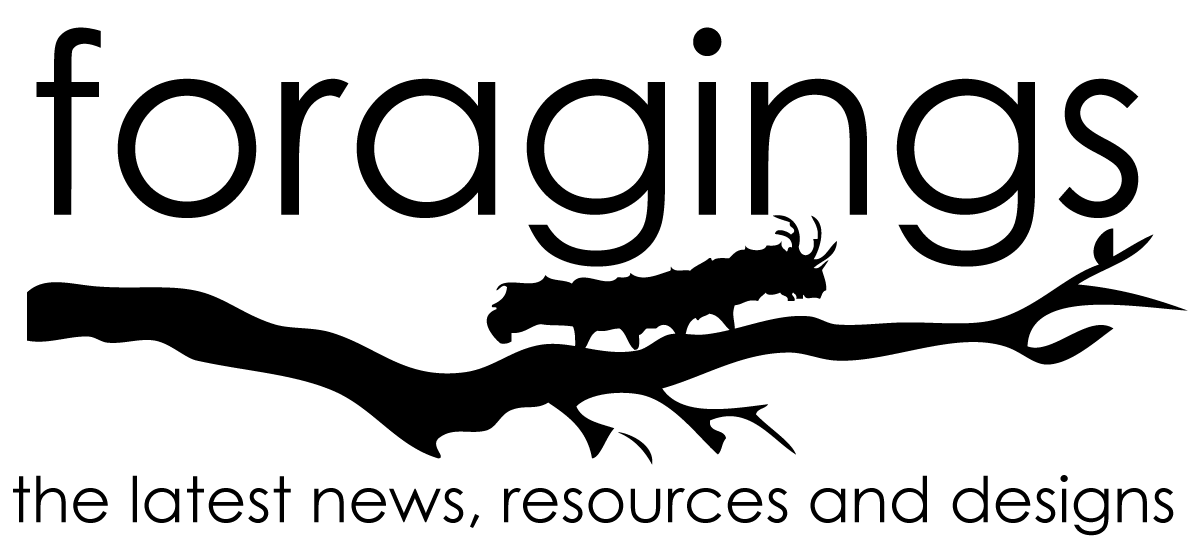News
- Vancouver Convention Centre roof a hive of insect and plant activity:: Three years on and the green roof of the Vancouver Convention Center has been greatly successful for wildlife housing ants, spiders, dragonflies, grasshoppers, bees and sparrows and finches.
- California Academy of Sciences’ roof is thriving:: Another green roof at three years old, the California Academy of Sciences’ roof has also become successful wildlife habitat including 173 species of arthropods including spiders, bees and butterflies as well as 30 species of birds such as Red-winged and Brewer’s Blackbirds.
- ‘Natural landscapes’ gone wild:: Yet another article on a subject which is seeing more and more press coverage; natural landscapes as a growing movement which are meeting resistance from cities and neighbors.
- A Reward for Bird-Friendly Buildings:: The LEED certification program is introducing project credits to designers for using certain criteria that make buildings more bird-friendly.
- L.A. Walks: Beachwood Canyon, Hollywood Sign:: This article from the L.A. Times features an urban nature walk with views and abundant canyon wildlife.
- Chi-town’s Animal Magnetism: 5 Questions for Biologist Seth Magle:: This interview describes how scientists in Chicago are using camera traps to study urban wildlife around the city.
- City Bees Newly Discovered, Yet Here All Along:: Four new bee species have been identified in New York City, although they’ve been there all along, they have only recently been discovered to be different species.
- Green Roofs:: A great summary of the benefits of green roofs on small buildings for urban biodiversity on the BBC Gardening Blog by Dusty Gedge.
- Raves: Country girl finds city is a place where she can take flight:: This article features a common theme of individuals who move to the city expecting nothing more than pigeons and rats and are happy and surprised to find a wide variety of wildlife outside their door.
- Germantown Academy turns wet athletic fields into nature preserve:: “The oldest nonsectarian private day school in the country has set aside six acres of its 126-acre Fort Washington campus to restore wetlands and meadows.”
- Dead space to green space – Navy Yard may turn burial ground into park:: An abandoned naval cemetery is the target of a plan for a new park which would incorporate a boardwalk, cherry grove, greenhouse and large meadow for wildlife which lit at night would serves as a memorial for the forgotten graves.
Resources
- Bee Basics – An Introduction to Our Native Bees (PDF):: This new downloadable book from the Pollinator Partnership and USDA Forest Service is a wealth of information about native bees with beautiful and detailed illustrations.
- Reptiles and Amphibians in Your Backyard (PDF):: A new resource from NC State University, this booklet features tips on how to attract reptiles and amphibians to your yard and many of these ideas will also attract many other wildlife species as a result.
- Scary-smart:: A fascinating post about ravens from the Next-Door Nature blog which discusses ravens in folklore and mythology and what aspects of their behavior have been an inspiration.
- What has nature ever done for us?:: This fantastic article features the wide multitude of things nature has done for us including music, food, healing, water, clothing and more.
- ‘Manahatta’ author Sanderson: Cities don’t make ecology disappear:: In this overview of the book Mannahatta the author states “The old idea is that cities are a predator to nature,” and “The city is so diverse that if we recognized it as such, we’d make it a national park.”
- Urban Wildlife Institute:: Out of the Lincoln Park Zoo in Chicago, ” the Urban Wildlife Institute studies the interaction between urban development and the natural ecosystem to develop scientific standards for minimizing conflict between these overlapping areas.”
- Make the most of an urban outdoor space:: A valuable article from the Guardian illustrates the variety of spaces and ways to incorporate plants into balconies or other small urban spaces.
- Pollinators and the garden in winter:: This is a great post on the Native Plants and Wildlife Gardens blog about how to maintain gardens for winter without disturbing pollinator habitat.
- BeeSmart App:: This new app for Android and iPhone features 1,000 native plants for pollinators and includes a search feature to find plants for the right region, light conditions, soil and more.
- The pollinator crisis: What’s best for bees:: A fascinating article on Nature which discusses recent findings about pollinator habitat and concludes that, “It takes a diverse assemblage of plants to support a diverse assemblage of bees.”
- Top 10 ways to attract more wildlife:: Although aimed at a UK audience, this list still includes valuable tips on attracting wildlife in creative ways.
Design
- RESET conference + IHDC 2011 awards:: This blog features the happenings of the RESET conference and the winning design of the Integrated Habitat Design Competition which were announced at the end of October.
- Jerusalem’s Green-Roofed Gutman Center is a Home for the Birds and the Bees:: Not only does the building have a turf covered roof with wildflowers for the birds and bees, but the walls themselves have been designed for birds to nest in.
- The Big Wildlife Garden:: “The more people who do their bit for the wildlife in their patch, the bigger the UK’s garden nature reserve. We’d like to find some of the best examples of wildlife gardens in the UK – ones that will inspire others to take action to turn their gardens into wildlife havens. Remember that size doesn’t matter – small-scale actions can still reap big rewards for wildlife.”



